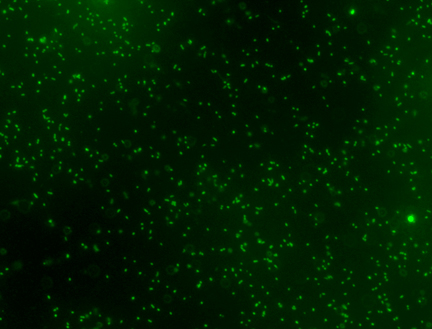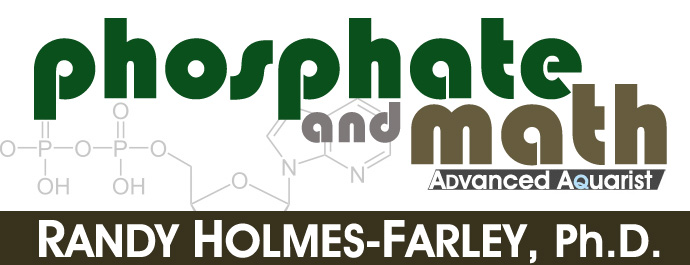Hi All,
Was just breaking down a specific food I feed to my young fish. They all have tiny mouths currently so PE calanus it is. I was curious how much nitrogen (potential ammonium) and phosphorus (phosphate) was added to my aquarium with each cube. I think the overall numbers will shock you (or maybe not if you knew this info already, haha). Now there is nothing special about this food that makes it bad, this breakdown is going to be close to most proteinaceous seafoods you add to the aquarium, (and maybe a lot better then those rinsed in triphosphate). This is complicated so I put a TLDR at the end.
Okay so the packaging gives you some clues

Focus down in the bottom left corner and find Phosphorus (MIN) 0.2%. This means that there is at minimum 0.2% phosphorus in each cube. Now a cube weighs 0.1 OZ (40 cubes /4oz package). We will convert that to grams which is 2.835 grams or 2835 mg. This means if I multiply the weight of the cube by the phosphorus percentage I can get the P per cube.
2835 x 0.002 = 5.67 mg of P per cube
Now this is just phosphorus, and living things only have phosphate so we can see how much is in there by taking the MW of Phosphate and dividing by the MW of phosphorus and multiplying it by the amount of mg
94.97/30.97 x 5.67 mg P = 17.4 mg of phosphate per cube
Lets do nitrogen next. From various scientific studies the Nitrogen hosphorus ratio of Calanus copepods is about 20:1. So I can use this number to figure out how much nitrogen is in the product. (This will get tricky so bear with me as I need to move to moles)
hosphorus ratio of Calanus copepods is about 20:1. So I can use this number to figure out how much nitrogen is in the product. (This will get tricky so bear with me as I need to move to moles)
17.4/94.97 = 0.18 mmoles of phosphate. So that means that we can multiple this number by 20 and get 3.6 mmoles of nitrogen in the product. Now I can convert back to mg by multiplying by nitrogen's MW of 14.
3.6 mmoles x 14 = 50.4 mg of nitrogen
Now this is just nitrogen and so if we want ammonium potential we need to multiply those N mmoles by the molecular weight of ammonium which is 18.
3.6 mmoles x 18 = 64.8 mg of potential ammonium
So conclusion and TLDR
WOW okay now what does this mean? Well lets say you have a 20 gallon aquarium (76 liters) and use 1 cube of calanus once or twice a day. Here is the resulting potentials if the food only has that minimum amount of phosphorus
1 cube added
0.23 ppm PO4 added to the aquarium
1.17 ppm NH4 potential added
2 cubes added
0.46 ppm PO4 added
2.34 ppm NH4 potential added
Now you hope all that goes into building mass of your livestock, but it just doesn't work that way because many many factors. The main one being that carbon is required for energy by the heterotrophs in your aquarium. Well I'm definitely not going to get into respiration rates etc... so I guess just trust me that there isn't enough carbon in this food (or any food for that matter) that won't cause your fish and other multicellular animals to excrete some amount of ammonium and phosphate. Oh and they're still going to waste a bunch of those organic carbons in other ways besides breathing e.g. feces, mucus layers, shedding etc. So I have no idea what the feed conversion is but I'd be extremely happy with 10% for growing fish thus utilizing 10% of the nitrogen and 10% of the phosphate. An adult fish who is done growing will conserve 0% of the nitrogen and phosphate.
Think of an adult person eating 2000 calories from beef jerky (no water weight). 2000 calories is their maintenance so that means this person is consuming 483 grams of beef jerky a day (1.06 pounds) but not gaining any weight. That means they must be losing that much carbo, nitrogen and phosphate everyday to maintain.
Oh and the reason for ammonium is because that is the main version in the tank. At pH 8.2 the water will have 93% ammonium and 7% ammonia. And their molecular weights are only 1 apart. Basically would have negligible effect on the results to use the combined MW of 17.93.
Hope you made it this far! haha
Was just breaking down a specific food I feed to my young fish. They all have tiny mouths currently so PE calanus it is. I was curious how much nitrogen (potential ammonium) and phosphorus (phosphate) was added to my aquarium with each cube. I think the overall numbers will shock you (or maybe not if you knew this info already, haha). Now there is nothing special about this food that makes it bad, this breakdown is going to be close to most proteinaceous seafoods you add to the aquarium, (and maybe a lot better then those rinsed in triphosphate). This is complicated so I put a TLDR at the end.
Okay so the packaging gives you some clues
Focus down in the bottom left corner and find Phosphorus (MIN) 0.2%. This means that there is at minimum 0.2% phosphorus in each cube. Now a cube weighs 0.1 OZ (40 cubes /4oz package). We will convert that to grams which is 2.835 grams or 2835 mg. This means if I multiply the weight of the cube by the phosphorus percentage I can get the P per cube.
2835 x 0.002 = 5.67 mg of P per cube
Now this is just phosphorus, and living things only have phosphate so we can see how much is in there by taking the MW of Phosphate and dividing by the MW of phosphorus and multiplying it by the amount of mg
94.97/30.97 x 5.67 mg P = 17.4 mg of phosphate per cube
Lets do nitrogen next. From various scientific studies the Nitrogen
17.4/94.97 = 0.18 mmoles of phosphate. So that means that we can multiple this number by 20 and get 3.6 mmoles of nitrogen in the product. Now I can convert back to mg by multiplying by nitrogen's MW of 14.
3.6 mmoles x 14 = 50.4 mg of nitrogen
Now this is just nitrogen and so if we want ammonium potential we need to multiply those N mmoles by the molecular weight of ammonium which is 18.
3.6 mmoles x 18 = 64.8 mg of potential ammonium
So conclusion and TLDR
WOW okay now what does this mean? Well lets say you have a 20 gallon aquarium (76 liters) and use 1 cube of calanus once or twice a day. Here is the resulting potentials if the food only has that minimum amount of phosphorus
1 cube added
0.23 ppm PO4 added to the aquarium
1.17 ppm NH4 potential added
2 cubes added
0.46 ppm PO4 added
2.34 ppm NH4 potential added
Now you hope all that goes into building mass of your livestock, but it just doesn't work that way because many many factors. The main one being that carbon is required for energy by the heterotrophs in your aquarium. Well I'm definitely not going to get into respiration rates etc... so I guess just trust me that there isn't enough carbon in this food (or any food for that matter) that won't cause your fish and other multicellular animals to excrete some amount of ammonium and phosphate. Oh and they're still going to waste a bunch of those organic carbons in other ways besides breathing e.g. feces, mucus layers, shedding etc. So I have no idea what the feed conversion is but I'd be extremely happy with 10% for growing fish thus utilizing 10% of the nitrogen and 10% of the phosphate. An adult fish who is done growing will conserve 0% of the nitrogen and phosphate.
Think of an adult person eating 2000 calories from beef jerky (no water weight). 2000 calories is their maintenance so that means this person is consuming 483 grams of beef jerky a day (1.06 pounds) but not gaining any weight. That means they must be losing that much carbo, nitrogen and phosphate everyday to maintain.
Oh and the reason for ammonium is because that is the main version in the tank. At pH 8.2 the water will have 93% ammonium and 7% ammonia. And their molecular weights are only 1 apart. Basically would have negligible effect on the results to use the combined MW of 17.93.
Hope you made it this far! haha
















